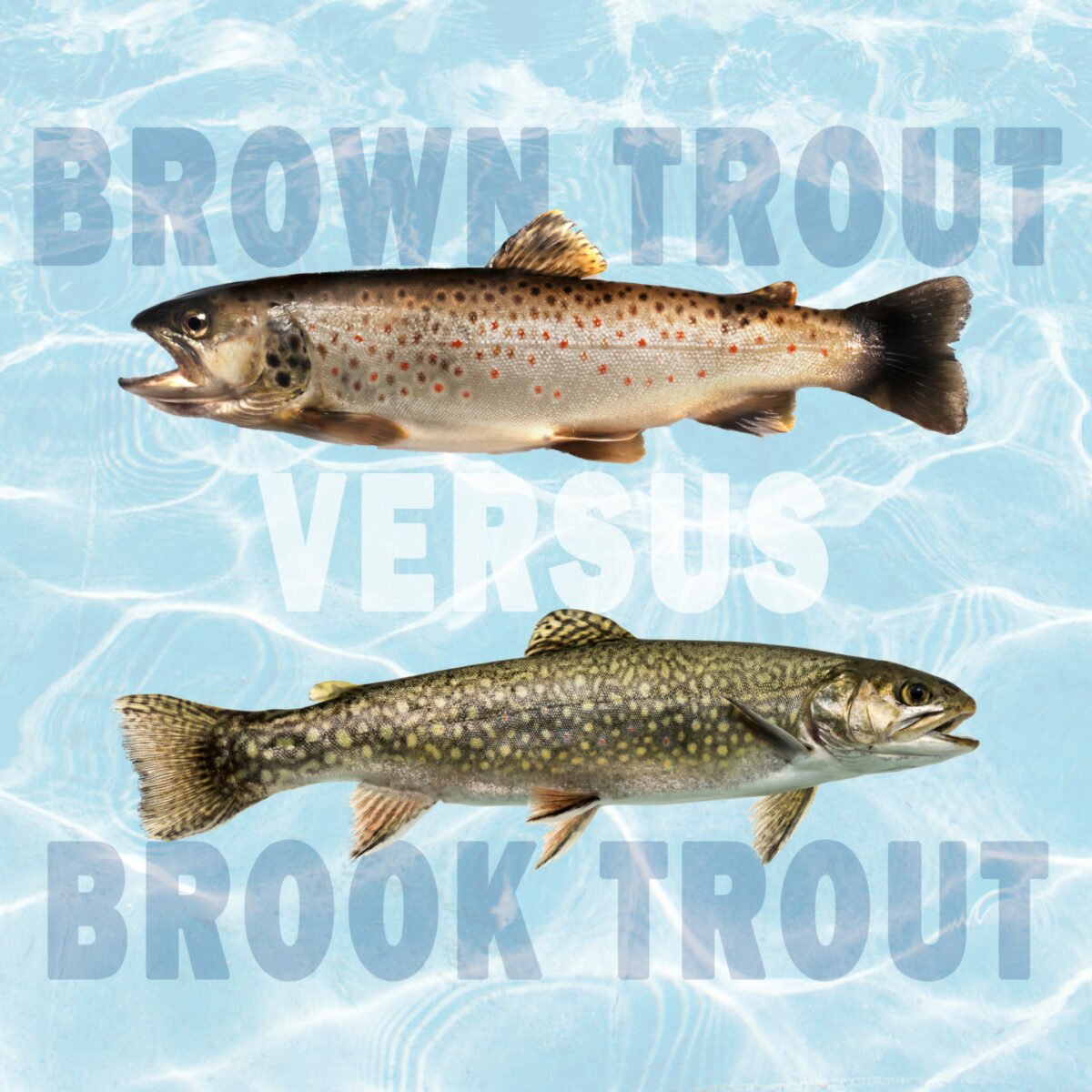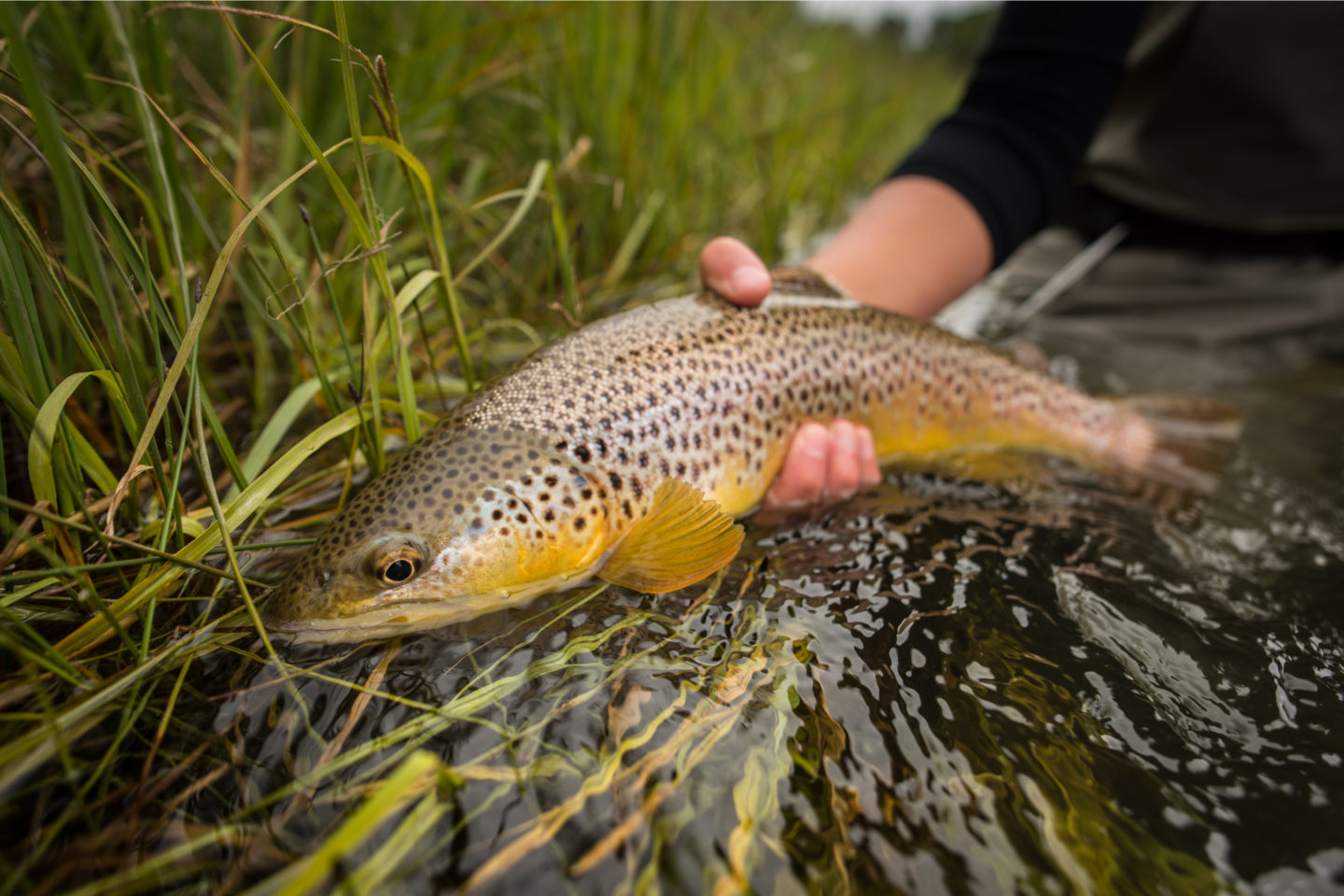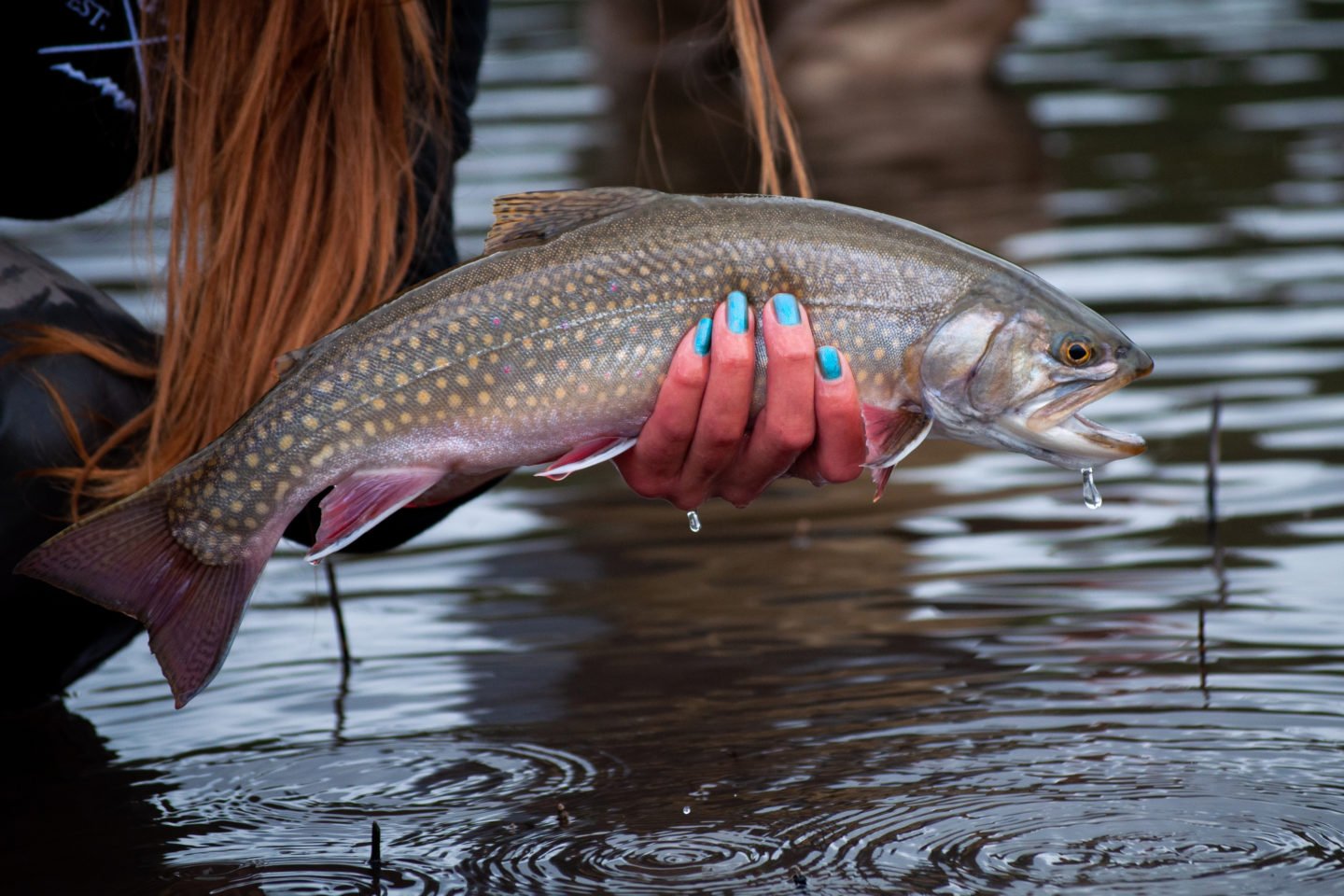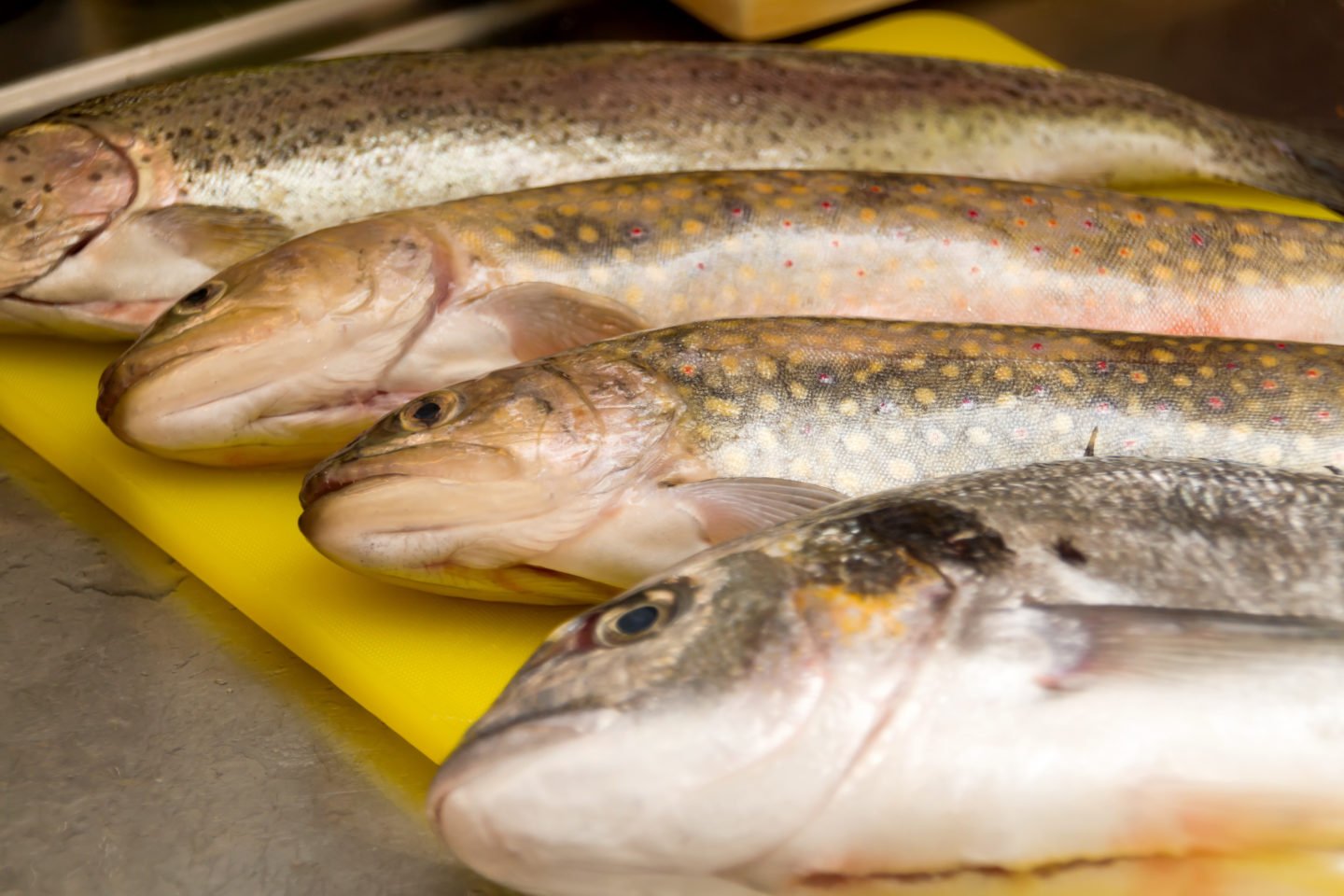The main difference between brown trout and brook trout is their color and lower fin appearance; brown trout are lighter in color with no spots in their lower fins, while brook trout are darker and have colorful spots with white edges in their lower fins.

These two types of trout differ in appearance and flavor; brown trout have a strong fishy flavor, while brook trout offer a mild and slightly sweet taste. Read on to learn everything about these two freshwater fishes, including their appearance, habitat, taste, and texture.
Table of Contents
Brown Trout

While brown trout and brook trout have much in common, they also have their fair share of differences. So make sure to check for all these factors when trying to tell one from another.
Appearance
Of the two, brown trout are larger than brook trout, usually measuring between 8 and 24 inches in length. But, of course, since they can each vary in size, it’s not the best way to make an identification. Luckily, several other visual indicators can help a conscientious angler tell them apart.
The brown trout has a much lighter color than the brook trout, with colors that include brown, orange, and copper with brown spots. The underbelly is more of a yellow or gold color, which is paler than the bellies of brook trout.
One other surefire way to visually distinguish brown trout is to look at their tails. The tail area should be similar to the underbelly, which is yellow or gold with little to no spots anywhere on the fin.
Habitat
Brown trout aren’t always easy for anglers to find because they love to hide. While the waters they call home are usually clear, they tend to stay in areas with plenty of cover. Places where debris like rocks and overhanging vegetation have collected and deep pools are some of their favorite haunts. They are more likely to be found in colder streams and rivers, though they can live in places with different temperatures.
While their love of shady, secluded spots might make them seem like shy fish, the truth is that they can put up quite a fight once they’re hooked. Even experienced anglers can have a hard time netting one of these.
Taste and Texture
If you’ve had steelhead or rainbow trout before, you might have an idea of what brown trout tastes like. However, the difference is that these have a much stronger fishy flavor, putting some people off. That is especially true of the larger specimens, as their flavor intensifies with age.
While some people enjoy the fishy flavor, many prefer milder-tasting fish. Luckily, there is a trick that can help cut down on the overpowering taste. Simply soak the fish in milk overnight, and then prepare as usual.
The texture of brown trout can be described as firm, delicate, and flakey when cooked. In addition, it has a relatively larger grain, especially for full-sized fish.
Brook Trout

Brook trout are similar enough to brown trout that even those who have been fishing their whole lives mix them up. However, with careful attention to detail, you can correctly identify them every time.
Appearance
Brook trout are, on average, a bit smaller than brown trout, staying between 6 and 15 inches in length. And so, a full-grown brook trout is only about as large as a relatively young brown trout.
The markings on the sides of the brook trout are much darker. The skin is a dark green that verges on black with bright pink spots surrounded by blue halos. This pattern changes as it reaches the back of the fish, looking more like worm-shaped squiggles that run from the head to the tail.
The belly of the fish, on the other hand, is nearly white, with two bands of bright orange running on either side of it. These colors will deepen and intensify as they reach the spawning season in fall.
Habitat
You may think you can only find brook trout in smaller streams, but the truth is that they are much more versatile than that. You can find them in wide rivers, lakes and ponds, and even the ocean. One of the other characteristics that can differentiate them from brown trout is that they can live in muddier water.
While it seems that brook trout can live just about anywhere, one thing they must have is a suitable current. That is because they don’t chase their prey like some other fish. Instead, they wait for a meal to swim by.
Because of this, they are only rarely found in slow-moving water. At the same time, currents that are too strong can make it difficult for them to hold steady. Thus, they are happier swimming in medium-speed currents.
Taste and Texture
If brown trout are too fishy for you, you may find that you prefer the flavor of brook trout. These are much sweeter and milder, without any of the strong fishy flavors of other species. That means people can enjoy them in different ways, ranging from pan-fried to baked and to braised.
In terms of texture, they are light and flakey when adequately prepared. In addition, because they are smaller than brown trout on average, their flesh has a slightly finer grain.
Can You Substitute Brown Trout for Brook Trout?

Brook trout and brown trout may be similar in some ways, but one of their most noticeable differences is their flavor. Brown trout have a strong fishy flavor that all but the most die-hard seafood fans will dislike. But on the other hand, Brook trout has a mild and slightly sweet flavor.
If you are looking for a substitute for brown trout, stick with salmon, mackerel, or herring. Brook trout substitutes include tilapia, cod, and haddock.
Frequently Asked Questions
Brown trout and brook trout are two different species, though you may get a different answer depending on who you ask. The confusion comes from the various subspecies of brown trout in Europe. These include sea trout, river trout, and, yes, lake trout.
Since they look similar to the brown trout we know, the two are often confused. But the truth is they are entirely different fishes.
While the flavor of trout and salmon is often compared, there are a few key differences in flavor. Salmon has a stronger flavor overall, with more incredible sweetness. Between brook trout and brown trout, they probably taste more similar to brown trout but with a stronger flavor.
While most fish species play an integral role in balancing the predator-prey relationship in their habitats, brown trout offer another key benefit. Since they can only live in clean, clear water, they are a good indicator of water quality to humans. So if you find brown trout in a particular lake or stream, you can bet that it is free of harmful pollutants.
It’s difficult to tell the exact age of a trout, though there are a few helpful rules of thumb. You can expect a 3-year-old trout to be about 15 inches while 4-year-old trout are closer to 17 inches on average. However, one factor that can affect this is habitat, as trout that grow up in a lake will tend to be larger than ones in rivers and streams.

Leave a Reply